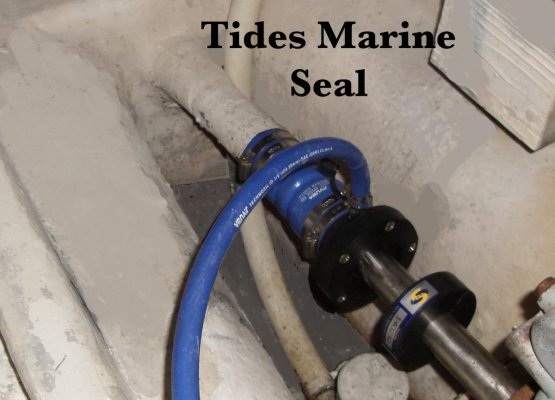healhustler
Guru
- Joined
- Oct 2, 2009
- Messages
- 5,198
- Location
- USA
- Vessel Name
- Bucky
- Vessel Make
- Krogen Manatee 36 North Sea
I've had my boat on the hard for the last 5 days in Stuart, FL. One of the items on the agenda was to install a new drip-less shaft seal. Initially, I wanted to replace the seal with the same PSS unit that I had since I bought the boat, which was no longer drip-less. I was encouraged by the Yard Super to go with a new big-buck Tides Marine Lip-Seal type since they were touting such great success with the recent installations. After installation of a new cutlass, a good shaft cleaning and prop & rudder reconditioning, we installed the new seal. In all fairness, I should say that in the area of the seal, there was about 1/2000's wear, and even though the seal felt OK going on the shaft, it wouldn't bite. It leaked from the very first turn. After several tries at adjustment, we gave up on it. Inspection of the seal after removal showed no damage, no wear, no anything.
We ordered the PSS seal for the 35 mm shaft immediately, and had it on the next day. Didn't leak a bit from the first revolution.
I'm reporting this just in case you're considering the Tides Marine seal. It is, no doubt, a very good product and worth the money, but apparently unforgiving when challenged with miniscule wear in smaller shafts like my own. Perhaps in larger shafts, this would not be the case. The yard had installed dozens of these seals with no issues, but in smaller shafts, a bit of wear may become critical.
We ordered the PSS seal for the 35 mm shaft immediately, and had it on the next day. Didn't leak a bit from the first revolution.
I'm reporting this just in case you're considering the Tides Marine seal. It is, no doubt, a very good product and worth the money, but apparently unforgiving when challenged with miniscule wear in smaller shafts like my own. Perhaps in larger shafts, this would not be the case. The yard had installed dozens of these seals with no issues, but in smaller shafts, a bit of wear may become critical.



